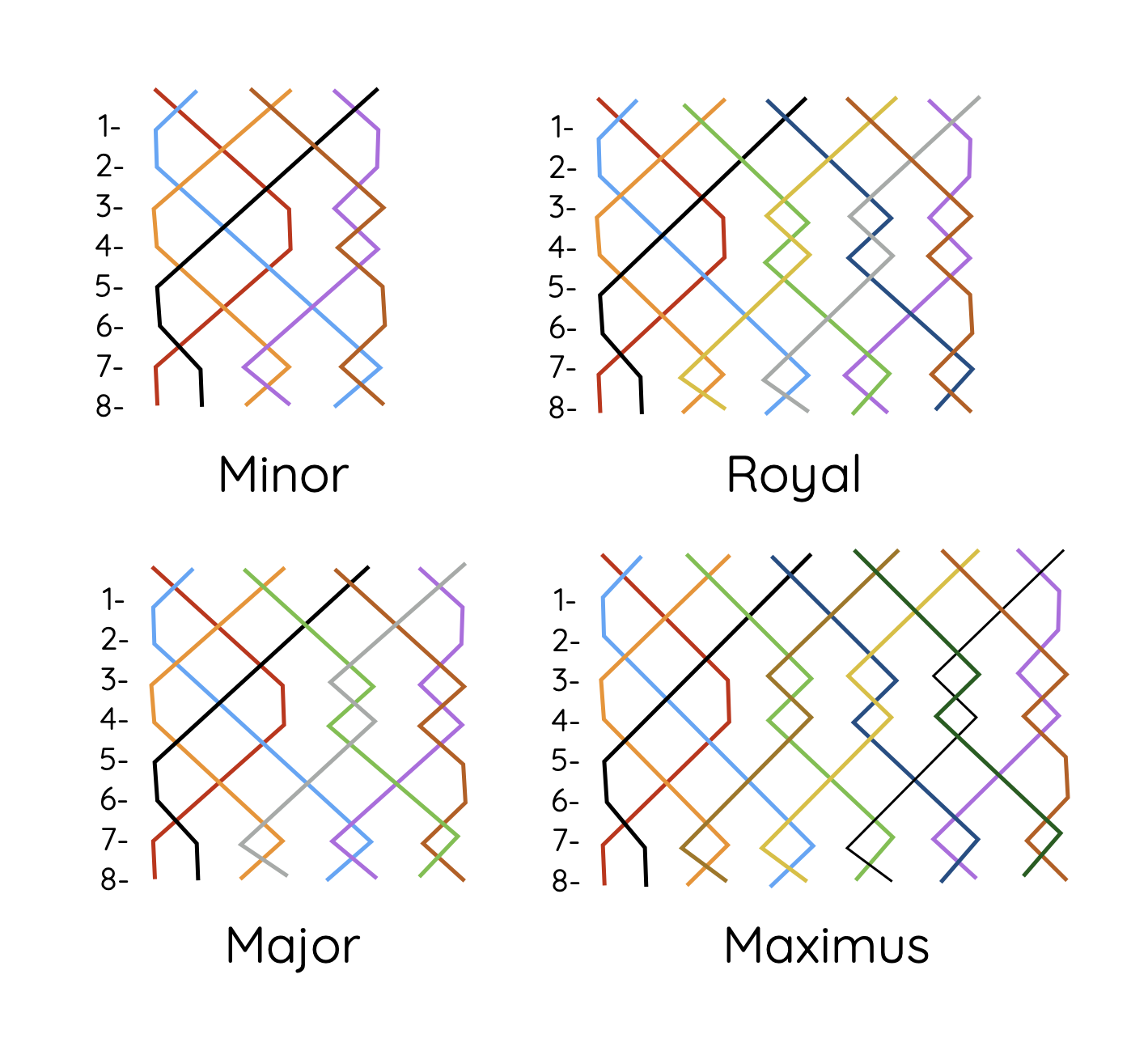
What is Little Bob?
Little Bob is a method where the Treble only hunts to 4th place, so each lead is only 8 changes.
This is irrespective of the number of bells.
It is very useful because:
- All versions have 8 change lead ends…
- The rules to ring it are very simple…
- It is can be used to shorten high number methods and touches.
- It provides excellent dodging practice.
- It is a gateway to treble bobbing methods.
However, it only works with even bells, so there are no doubles, triples or caters versions.
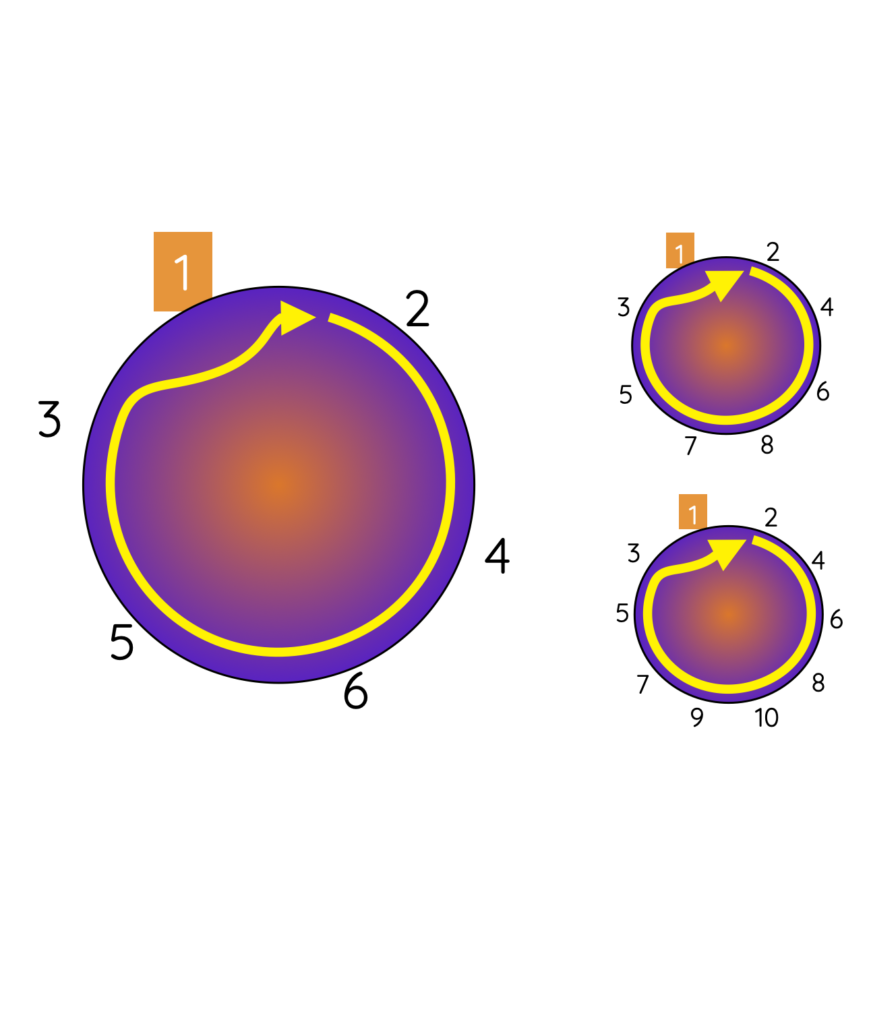
The Treble and Little Bob
Because it is so closely related to Plain Bob, Little Bob has the same coursing order… the even bells come down one after another (2, 4, 6, 8, etc.), followed by the odd bells in reverse order (..7, 5, 3).
The treble will pass the same bells in each direction… but only 3 at a time.
Because of seconds, the first bells of the next sequence is the last bell of the previous one…
Example orders…
- Lead 1… 2, 4, 6 (turn), 2, 4, 6, Lead…
- Lead 2… 6, 5, 3 (turn), 6, 5, 3, Lead…
- Lead 3… 3, 2, 4 (turn), 3, 2, 4, Lead…
- Lead 4… 4, 6, 5 (turn), 4, 6, 5, Lead…
- Lead 5… 5, 3, 2 (turn), 5, 3, 2, Lead… (back to top…)
In addition… at a bob, only three bells will change and two will be ones you have just passed! All the others stay the same.
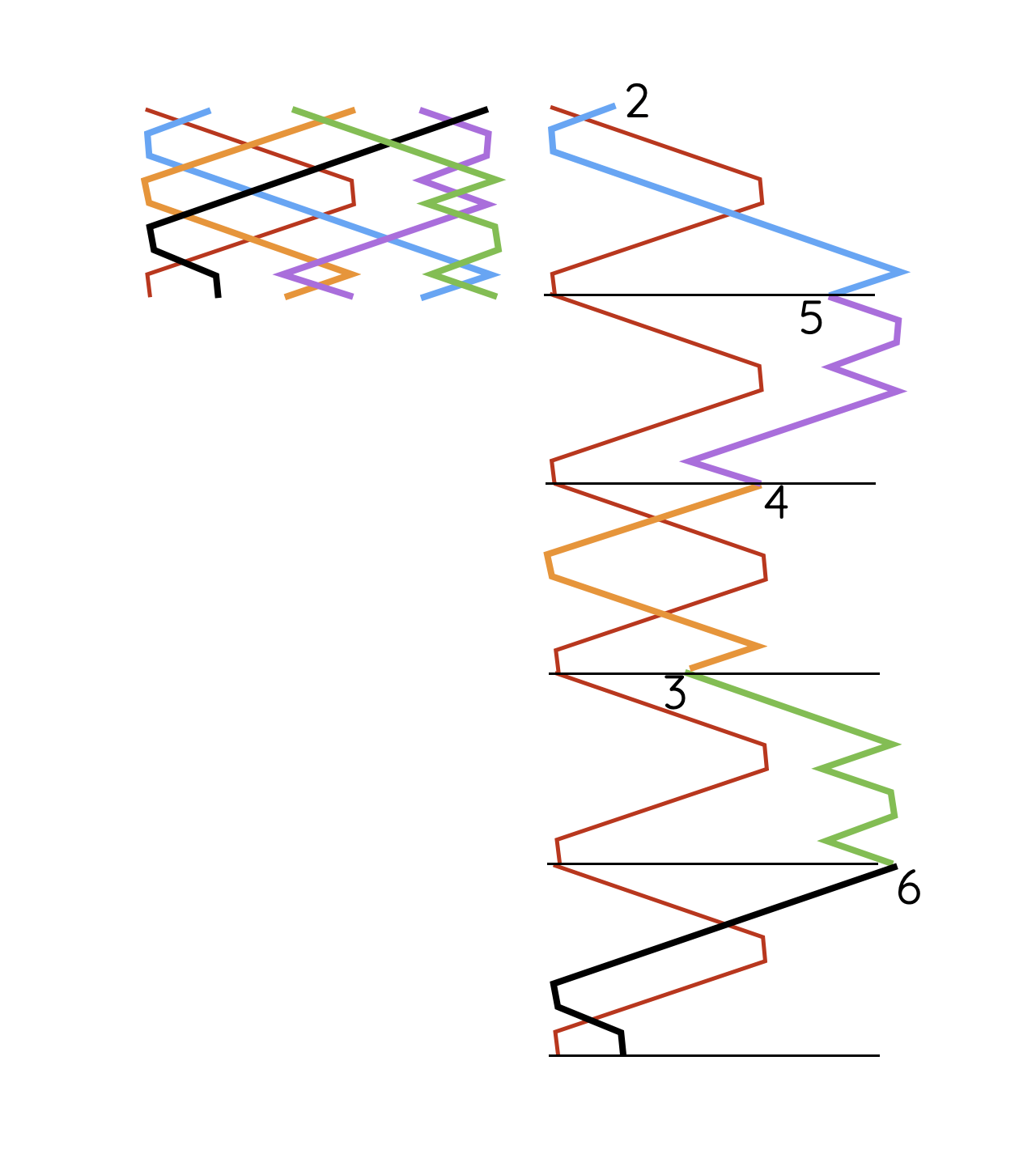
Little Bob Minor
The basis of Little Bob is Plain Hunt/Plain Bob.
It has a Plain Bob lead end…. So a bell makes seconds over the treble which causes all higher place bells to dodge. i.e in 3-4 and 5-6.
Because the treble turns in 4th place, it momentarily blocks higher place bells from hunting down, causing another dodge above. i.e in 5-6.
It can be rung by simple rules…
Dodge with everyone except the Treble.
If you meet the treble in 3-4, plain hunt past…
If the treble takes you off lead… make seconds.
As a result there are two assumptions you can also apply:
If you dodge in 3-4, you will not make 2nds.
If you make 2nds, you will not dodge in 3-4.
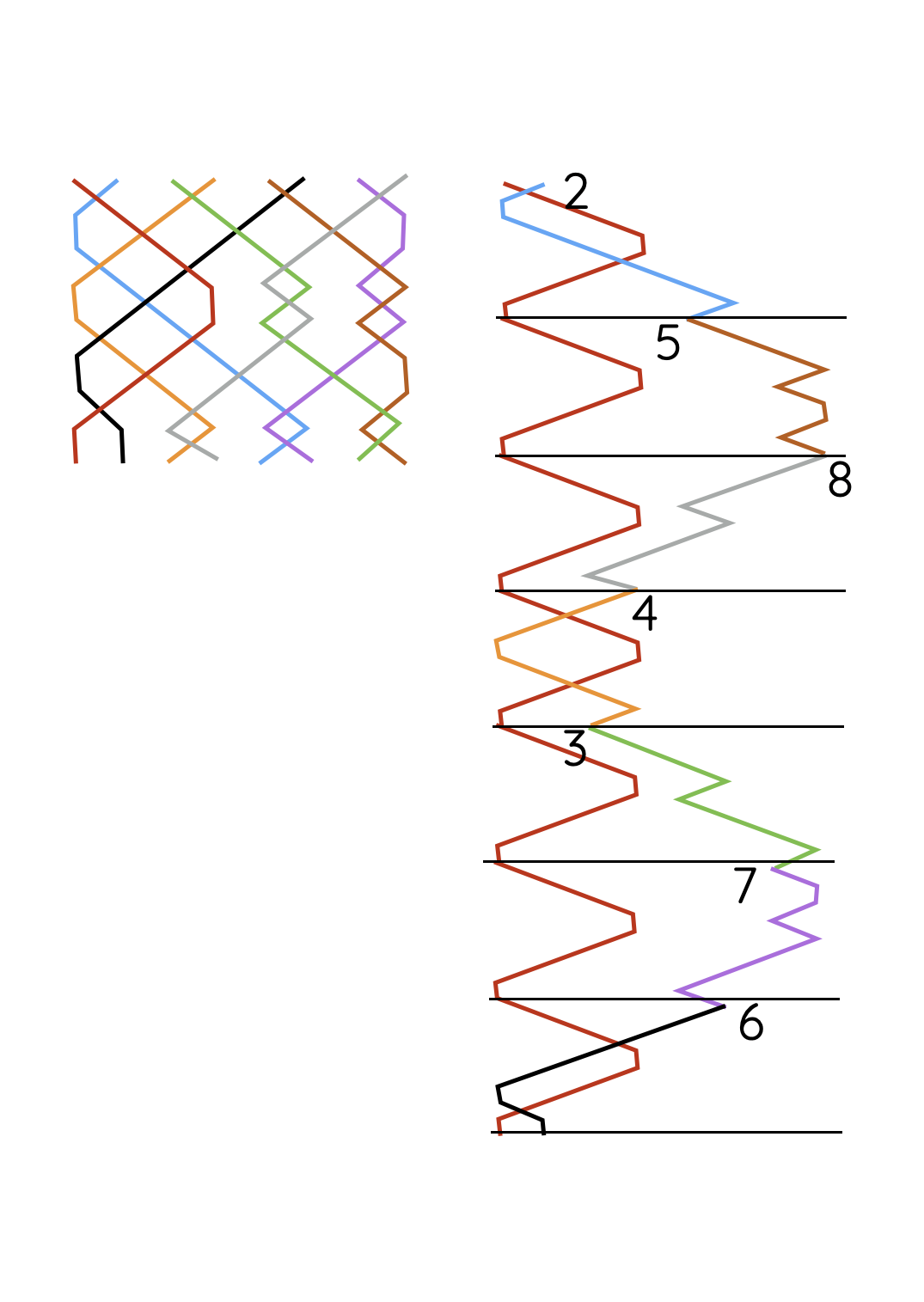
Little Bob Major
The basis of Little Bob is Plain Hunt/Plain Bob.
It can be rung by the same simple rules as minor (see above)…
Work order…
2nds place bell… Complete seconds by leading… pass the treble in 3-4 on the way to a 6-5 (up) dodge.
5ths place bell… Hunt and dodge 8-7 (up). Lie and dodge 7-8 (down).
8th place bell… Hunt to and dodge 5-6 (down), then on to 3-4 (down).
4th place bell… Hunt to the front and lead, hunt to a 4-3 (up) dodge.
3rd place bell… Hunt to 6-5 (up) dodge, then to 8-7 (up) dodge.
7th place bell… Lie and dodge 7-8 (down), then on to 5-6 (down).
6th place bell… Hunt to front (pass treble in 3-4). Lead and make 2nds.
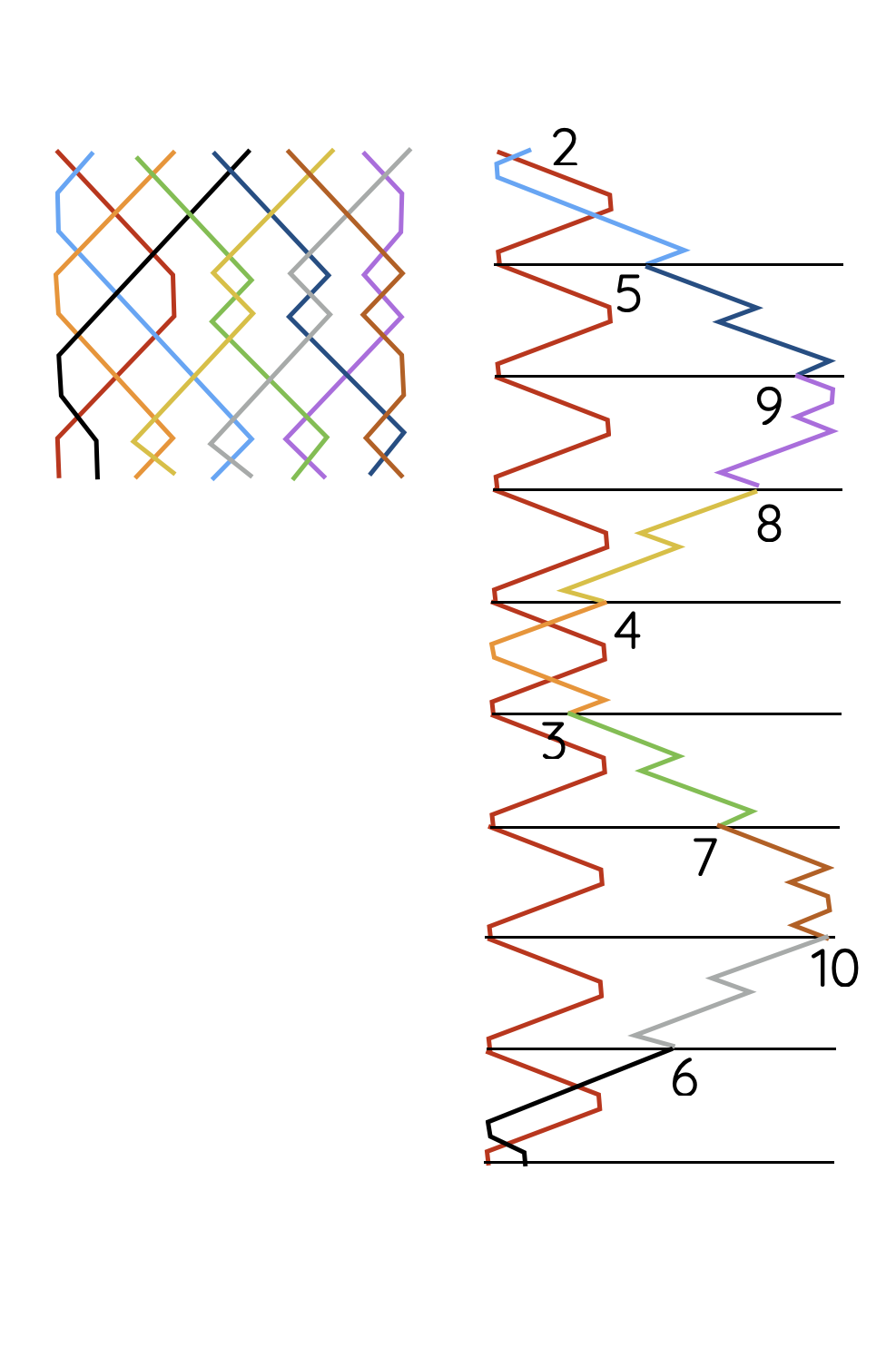
Little Bob Royal
Little Bob Royal also follows exactly the same rules as minor and major… it just adds extra dodges at 9-10.
Work order:
2nd place bell… Complete seconds by leading… pass the treble in 3-4 on the way to a 6-5 (up) dodge.
5th place bell… Hunt and dodge 8-7 (up), the on to 10-9 (up).
9th place bell… Lie and dodge 9-10 (down), then on to 7-8 (down)
8th place bell… Hunt to and dodge 5-6 (down), then on to 3-4 (down).
4th place bell… Hunt to the front and lead, hunt to a 4-3 (up) dodge.
3rd place bell… Hunt to 6-5 (up) dodge, then to 8-7 (up) dodge.
7th place bell… Lie and dodge 7-8 (down), then on to 5-6 (down).
10th place bell… Hunt to and dodge 7-8 (down) then to 5-6 (down).
6th place bell… Hunt to front (pass treble in 3-4). Lead and make 2nds.
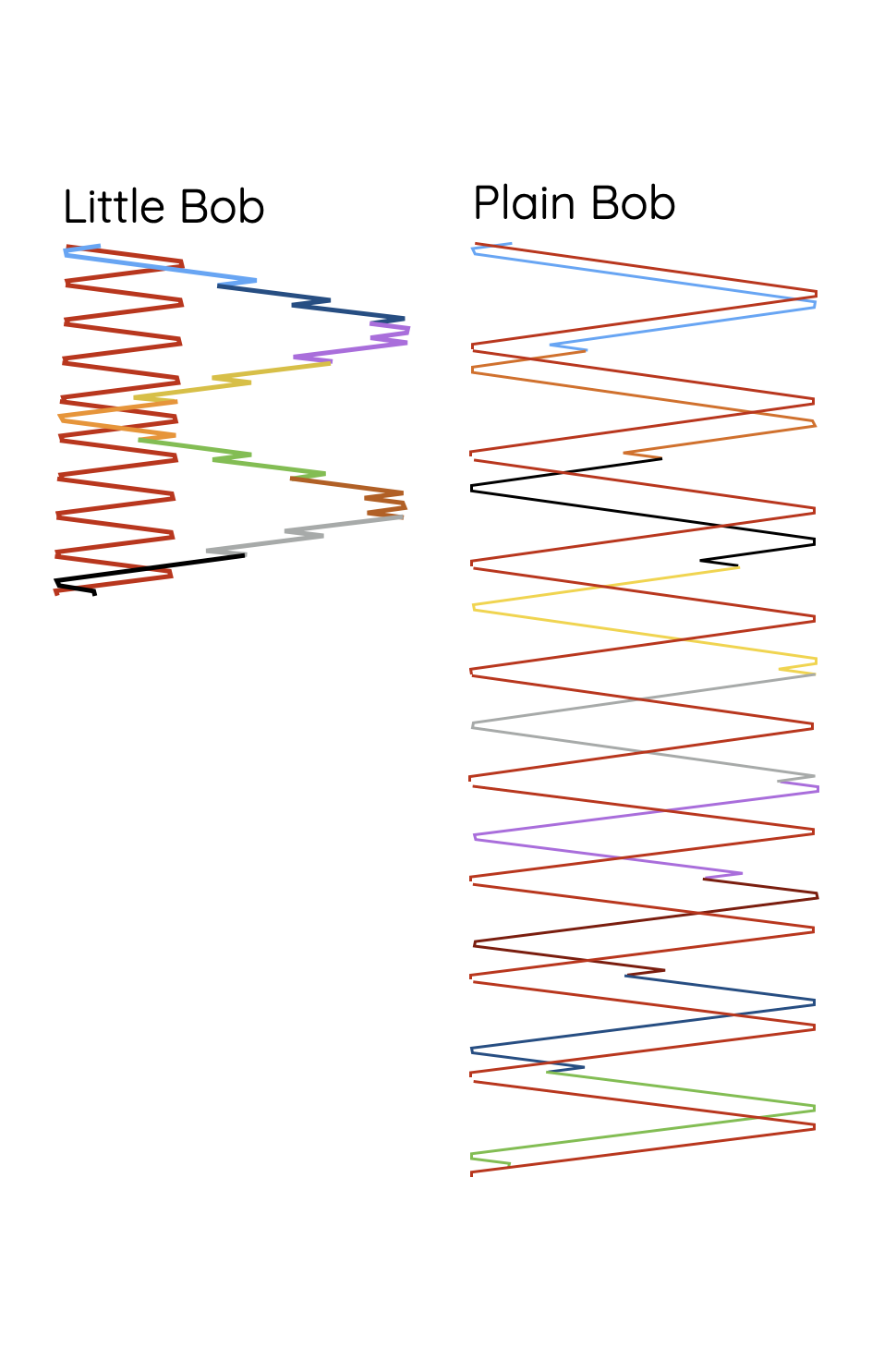
Compress the line...
- Little Bob is wonderful for high number ringing, because a plain course is short.
-
-
Minor 40 changes
-
Major 56 changes
-
Royal 72 changes.
-
This is also true with respect to touches. We use the same composition as for Plain Bob but:
- Use any Little Bob Rob touch and the touch will be measured by the number of leads x8.
-
It means that minor touches will be 33% shorter, major 50% shorter and Royal 60% shorter than the equivalent Plain Bob touch.
For Minor, the use of Little Bob is somewhat limited because it is only possible to ring 480 changes…. so it can’t be used in quarter peals or peals, without some clever splicing. However, in Major there are 26,000+ changes available, so the problem does not occur!

Splicing
Little Bob is often used to help truncate very long methods on higher numbers of bells.
A plain course of Bob Royal is 180 changes… and a simple touch will probably be 360+, which will take at least 20 minutes to ring, so not ideal for a practice night!
The same calling using Little Bob will be only 144 changes and possible to ring in about 7 minutes.
If Plain and Little are Spliced, then it can be even shorter… possibly as short as 48 changes!
Because both Plain and Little have the same starts and the same lead ends, this works fine and there is plenty of time to decide what to do next, for those that are unsure.

Splicing
The following rules are useful when splicing:
1 lead of Little Bob is worth 3 leads of PB Minor, 5 of Major, 7 of Royal …..Or think of it as going one lead backwards!
1 lead of Plain Bob is worth 2 leads of Little Bob Minor, 3 of Major, 4 or Royal.
Always call the change of method at the actual lead end… i.e. a whole pull later than you call a Bob!
Even a Plain course can be truncated…
Use any combination of splices e.g. for Minor – LPP, PLP, or PPL would all yield the same result.
If you want to know more… take at look at both Blue Line and the CCBR Library.
- The CCCBR, have a comprehensive set of links to related methods at the bottom of the page… and there are lots!
- Blue Line list more than 20 pages of alternative little methods… all of which only hunt the treble part way to the back!
